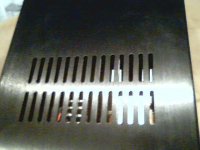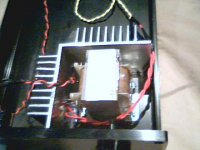I have used the following aluminium heatsink around my transformer (which is housed in a corner with two of these heatsinks) to try and prevent RFI/EMI leaking to my circuit.
Aluminum Heatsink Cooling for LED Power Memory Chip IC Transistor various length | eBay
The Mains is 50-60Hz 230A UK power supply powering a 36VA EI core transformer. There are 3mm gaps above the heatsinks, but about 1/4 of the transformer is under a chassis vent.
I have read conflicting reports with regards to EMI/RFI, so my question are these.
1) Is the heatsink listed above along with the chassis vent (over a quarter of the transformer) enough of a shield.
2) And can the EMI/RFI escape through the chassis vents?
3) Is there any point in covering the transformer with aluminium foil, if so is there a specific way of doing so?
Have enclosed some pics.
My understanding is that aluminium can protect against RFI but you need something magnetic against EMI, but as I have said I have read conflicting stuff.
Aluminum Heatsink Cooling for LED Power Memory Chip IC Transistor various length | eBay
The Mains is 50-60Hz 230A UK power supply powering a 36VA EI core transformer. There are 3mm gaps above the heatsinks, but about 1/4 of the transformer is under a chassis vent.
I have read conflicting reports with regards to EMI/RFI, so my question are these.
1) Is the heatsink listed above along with the chassis vent (over a quarter of the transformer) enough of a shield.
2) And can the EMI/RFI escape through the chassis vents?
3) Is there any point in covering the transformer with aluminium foil, if so is there a specific way of doing so?
Have enclosed some pics.
My understanding is that aluminium can protect against RFI but you need something magnetic against EMI, but as I have said I have read conflicting stuff.
Attachments
The short answer is yes. RF can easily get into your chassis. I live in a normal neighborhood. When I log onto my home network, I see 7 other networks with various signal strengths. I presume from neighbor's setups. Throw in radio, television, cell, wireless phones and camera systems and you can see most of us are heavily bombarded by a array of airborne signals.
emi passes straight through a gap.
An extreme example is your phone and transistor radio or any other "receiver".
The emi bends around obstacles to become the listenable signal.
Even when sitting inside your car chassis the "radio/phone" still works.
When the gap is less than 1/10th of the wavelength, then there is some screening effect. That's why the holes in the door screen of your microwave cooker are so small.
The 3mm holes start to have a screening effect for 3cm wavelengths (and longer) and microwaves are around 10cm wavelength.
An extreme example is your phone and transistor radio or any other "receiver".
The emi bends around obstacles to become the listenable signal.
Even when sitting inside your car chassis the "radio/phone" still works.
When the gap is less than 1/10th of the wavelength, then there is some screening effect. That's why the holes in the door screen of your microwave cooker are so small.
The 3mm holes start to have a screening effect for 3cm wavelengths (and longer) and microwaves are around 10cm wavelength.
Last edited:
Why use expensive heatsink extrusion when a simple piece of aluminium sheet would have the same effect? Exactly what are you trying to achieve? Stop hum/noise and other low frequency interference? Stop RF?
Aluminium won't stop hum caused by magnetic coupling. For that you need either a belly band or thick ferromagnetic screening - neither are usually necessary except in critical situations like test equipment. Aluminium will stop hum from electric field coupling, but that is not usually a problem with transformers.
Aluminium will stop RF, provided that there are no gaps. Transformers don't usually radiate RF, but they may conduct it. To stop conducted RF you need filters, not screening.
I think you need to understand your problem before you seek a solution.
Aluminium won't stop hum caused by magnetic coupling. For that you need either a belly band or thick ferromagnetic screening - neither are usually necessary except in critical situations like test equipment. Aluminium will stop hum from electric field coupling, but that is not usually a problem with transformers.
Aluminium will stop RF, provided that there are no gaps. Transformers don't usually radiate RF, but they may conduct it. To stop conducted RF you need filters, not screening.
I think you need to understand your problem before you seek a solution.
EMC shielding is a lot to do with slots and seams....
Join this site and look at the page linked to...
EMC Information Centre
Join this site and look at the page linked to...
EMC Information Centre
A Battery-Powered Class A Headphone Amp | audioXpress by Rick MacDonald
And the copper screen / grill is made with a lot of small rounded holes to avoid that them work as RF antennas array.Chokes and Copper Shielding
In a modern environment where so many sources exist for producing and emitting RF and EMI, you must take them into account and control them. Using batteries is a good place to start, but eliminating the AC connection is not going to stop EMI caused by wireless telecom, HV lines, home wiring, and switching supplies in your computer, to name only a few. RF guys have known this for decades, which is why companies such as Raytheon and Toyota build huge RF anechoic chambers for controlled tests...
Over the vents I used copper screen (Photo 5) doubled over for strength, and attached with socket cap screws in six locations. Be careful with both types of shielding, making sure no small threads or parts of the mesh touch the PCB, connectors, or short any part of the amp.
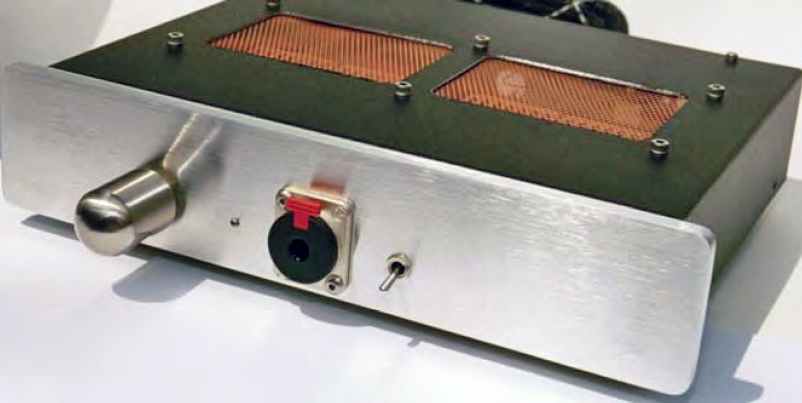
The two small chokes on the power coming into the amp are simple common-mode chokes (Fig. 2). You can make a simple version by twisting +V and Gnd, −V and Gnd, and slipping a ferrite ring over each twisted pair. These, with the shielding, will help keep RF and EMI at bay. This may all be overkill, but a battery alone is not the end-all solution to power-supply ills...
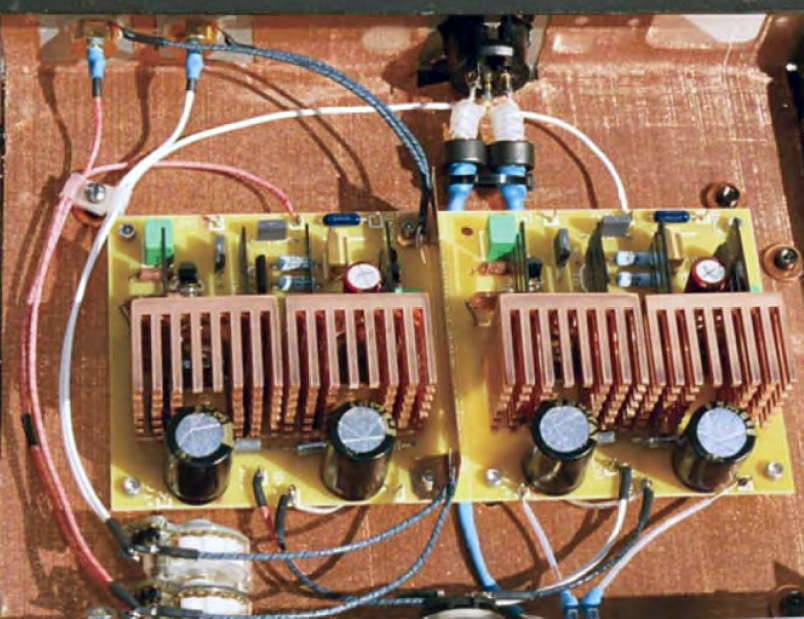
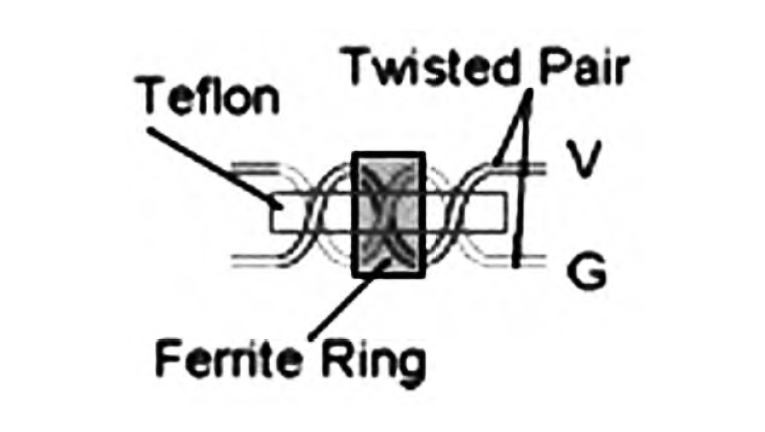
Last edited:
